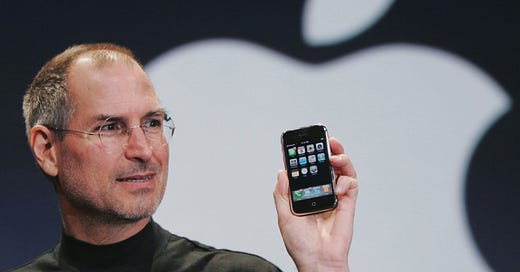Hey AI Explorer,
Welcome to the latest edition of your weekly newsletter “Solve with AI”.
Einstein once said, "If I had an hour to solve a problem I'd spend 55 minutes thinking about the problem and 5 minutes thinking about solutions."
You may think spending most of the energy in solution is the right thing to do. In some cases, it may make sense. However, decrypting the problem with detailed and structured questions is way more powerful than jumping to a solution.
Questions can help you solve complex professional, personal, or macroeconomic/environmental problems.
Be it a team performance issue at work, communication with your teenager, or uncovering an economic mishap.
A UK-based insurance company, Direct Line, found that the average adult spends about 1 hour and 50 minutes a day worrying.
28 days a year
5 years and 2 months in 80 years spent worrying.
If I compare the results of this study with Einstein's way of solving problems then we uncover the following:
Focused thinking: You must spend time clarifying the real problem to gain a deeper understanding before jumping to solutions. This is a productive form of thinking aimed at problem-solving. Most people just spin in circles, wasting energy. Focus brings results.
Productive vs unproductive thoughts: Analyze and understand before you act. Use your time to analyze and understand problems, leading to more effective solutions. Worrying is a waste of time. Cut it out and get to the heart of the issue by asking the right questions.
Shift your mindset: Adopt a mindset where more time is spent on understanding problems in a structured way, as Einstein suggested, rather than allowing worries to dominate thoughts. Transform worries into an action plan.
Take Action: Spend initial time clearly defining the problem. Use the rest of your energy on actionable steps, reducing the tendency to worry.
Clarity over Anxiety: Focus on clarity in understanding the problem, you can reduce anxiety and uncertainty which are common triggers for excessive worrying. Focus on what you can control and take charge by asking the right questions.
The essence of what we learn from above is to develop a mindset of asking questions.
Stay curious my friend!
The problem is it is not that easy.
You cannot become an interviewing expert overnight. Our social media reels are filled with garbage advice of “5 questions you can ask in any situation….”.
Building the skills to ask the right questions at the right time and consistently takes time.
Plus, I believe there are many barriers you must overcome before you have a super curious mindset.
You may worry that people may judge your questions and think you are unprepared or ignorant.
You may feel you know the answer and refrain from asking follow-up questions leading to premature solutions.
You may not have the right skills to structure and formulate your questions. This is the biggest area of focus for me today. I strongly believe the other barriers become easier to overcome when you develop the right skill set.
You may focus on small talk due to time pressure.
Your cognitive bias may prevent you from challenging assumptions.
This newsletter is sponsored by Nord VPN.
Get 74% off + 3 months extra only for Solve with AI subscribers.
I use Nord VPN across all of my personal and household devices for one low cost to protect my privacy and identity.
Besides these 5 barriers, you can also experience additional barriers such as culture, habit, and resistance to change.
I know you may be tempted to learn the skills required to become an expert at asking questions.
But I need to highlight to you the problems so we know what we are dealing with (remember the Einstein way of thinking? :)).
Now, let’s focus on the best frameworks available to improve your questioning skills.
There may be many ways to structure the questions but the best model that I use and recommend is from Frank Sesno.
Frank is a seasoned journalist and former CNN correspondent, he spent decades amid major world events (elections, wars, famine, disasters), learning how to dig deep and uncover the truth.
He teaches media and public affairs at George Washington University and through his book "Ask More," he explores the power of questions and how they can be used to solve problems.
Let’s dive deeper into the framework from Frank’s book.
Keep reading with a 7-day free trial
Subscribe to Solve with AI to keep reading this post and get 7 days of free access to the full post archives.




